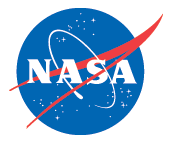


Unfortunately, using the ion sputter pump is an imperfect solution to purifying the chamber. First of all, a fraction of the ions that have been physically buried in the chamber wall may work their way out of the wall later and interfere with tests being run. In addition, chemical pumps work well only for some compounds. These factors limit their use, but these limitations are not insurmountable problems. The instrumentís designers developed the mission timeline to work around the challenges.
In addition, although getter and ion sputter pumps work well in creating a vacuum, it is impossible for scientists to create a complete vacuum. There is always some mixture of gases inside the chamber, which scientists call residual or background. The background tends to be gases of a low molecular weight, such as hydrogen or helium, because lightweight gases are extremely difficult for pumps to remove.
Although the amount of background is very small, it can influence the results of tests run by the GCMS if scientists do not account for it. Consequently, when the scientists turn on the GCMS, the first 50 seconds are devoted to a background scan, during which the scientists record the residual gases present in the instrument. Scientists then use this data to differentiate background from actual atmospheric gas let into the instrument.